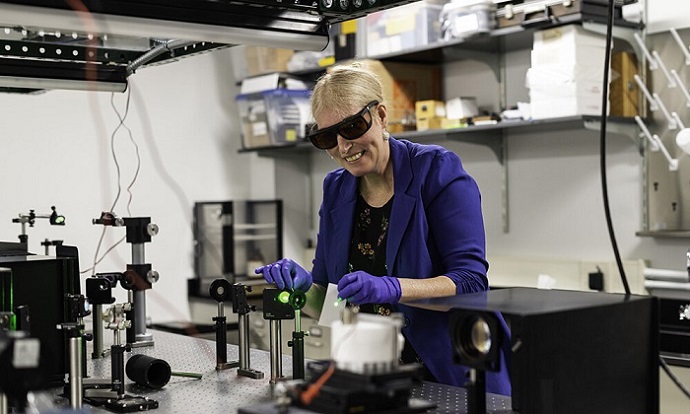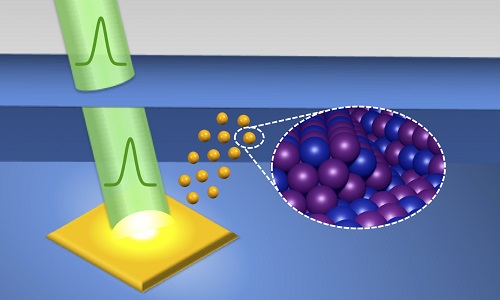ROCHESTER, N.Y., Aug. 5, 2021 — A team at the University of Rochester showed the efficacy of pulsed lasers in accelerating research into chemical catalysts. The development of even a single catalyst material capable of triggering the arrangement and motion of the atoms needed to react favorably with the right chemical compounds can take months or even years using traditional wet chemistry procedures that use only chemical reactions — often in the liquid phase — to grow nanoparticles.
When the right catalysts are mixed with the right chemical compounds, molecules that would otherwise take years to interact do so in mere seconds. Chemical catalysts are the change agents behind the production of just about everything we use in our daily lives, from plastics to prescription drugs.
The Rochester team, which reviewed close to 600 previous papers involving the use of pulsed lasers in liquids, reported there is a way to shorten that process dramatically — by using pulsed lasers in liquids to quickly create carefully tuned, systematic arrays of nanoparticles that can be easily compared and tested for use as catalysts.
The study was led by Astrid Müller, a professor of chemical engineering at the University of Rochester, along with co-authors Ryland Forsythe, Connor Cox, and Madeleine Wilsey.

Using pulsed lasers in liquids is an 'indispensable tool' for discovering catalysts, said Astrid Müller, an assistant professor of chemical engineering, whose background includes work in lasers, materials, and electrocatalysis. Courtesy of J. Adam Fenster, University of Rochester.
The process begins with a pulsed laser that is directed at a solid material immersed in liquid. This creates a high-temperature, high-pressure plasma near the surface of the solid. As the plasma decays, it vaporizes molecules in the surrounding liquid, leading to a cavitation bubble. Within the bubble, chemical reactions begin to occur between particles from the liquid and particles that were ablated, or knocked loose, from the solid.
After periodic expansions and contractions, the cavitation bubble violently implodes, causing shock waves and rapid cooling. Nanoparticles from the bubble condense in small clusters that are injected into the surrounding liquid and become stable.
The method offers multiple advantages over traditional wet-lab synthesis of nanomaterials, Müller said. Because reactions are confined primarily within the cavitation bubble, the resulting nanoparticles have remarkably uniform properties because they are created in the same conditions. Additionally, the properties of the nanoparticles can easily be fine-tuned by adjusting the laser pulses and the chemical compositions of the solid and surrounding fluid. The laser-made nanocatalysts are also intrinsically more active than those created through wet chemistry methods. Metastable nanomaterials with nonequilibrium structures and composites can easily be produced; such materials can’t be made under moderate temperatures and pressures.

A pulsed laser beam (green) strikes a solid immersed in liquid, triggering a sequence of events that creates uniform nanoparticles with controlled properties. Illustration courtesy of Astrid Müller.
Laser synthesis may also be controlled remotely. It’s also much quicker. The technique can prepare bulk quantities of a nanoparticle in an hour or less. Systematic arrays of 70 materials can be made in a week.
“These advantages make this an indispensable tool for discovery,” Müller said.
Pulsed-laser-in-liquid synthesis has had only limited commercial use. The startup cost of investing in laser technology is a stumbling block for many companies, Müller said. “But that will change as this method gets more and more traction,” she said.
The research was published in Chemical Reviews (www.doi.org/10.1021/acs.chemrev.0c01069).